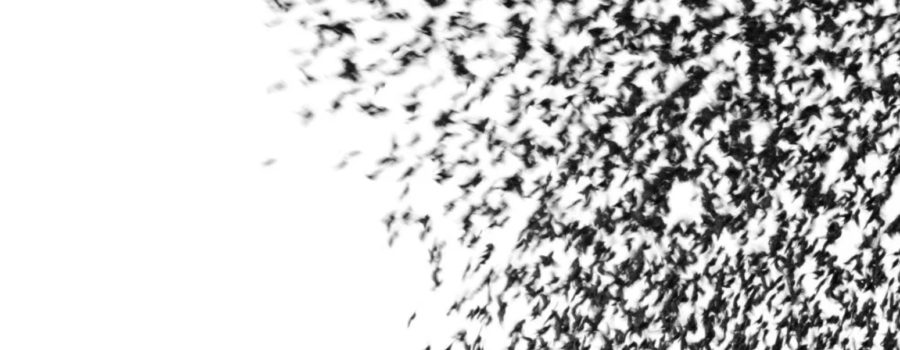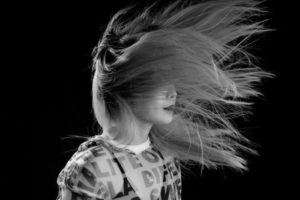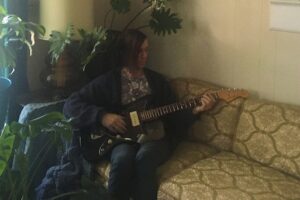Convergence of Birds
Yeah nah: Reflections on Convergence & Imagereality
Scott Navicky

“Return to Innocence” – Enigma
Imagereality is a disturbance to convergence
Thus, anyone seeking to understand Imagereality becomes a scholar of the cultural kitchen sink
In the end, what quelled my dissonance was the idea that, since images live in the world, they resemble living organisms; and thus, ZO Magazine’s 2015 Art Expo was less of a convergence of visual ideas and more of a convergence of, say, birds.
Although it’s been years since I left Aotearoa New Zealand, I still retain a confusing residue of kiwispeak: sweet as, chocka, sparrow’s faaart… y’know, the usual stuff. So when a mate recently asked me if judging ZO Magazine’s 2015 Art Expo was easy, without thinking I answered: “Yeah nah.” (I never quite understood this kiwi conversational oddity; just because it’s called a “Yes/No Question” doesn’t mean you have to answer with each.)

“il-giocoliere | juggling” © Andrea Giorgi
All of the artwork submitted to the Art Expo was uniformly strong, and this made my job easy: Il Giocoliere (Juggling) is an instantaneously striking image that possesses subtle undertones of Italian Futurism, a movement of limited importance to the history of art, but fascinating significance to the history of photography; Summer Chaos rewards extended viewing, drawing viewers into a swirling vortex of whimsical figurative recognition mixed with dizzying all-over compositional abstraction; the fictive elements of Lost resemble a movie poster designed to entice and intrigue, while Canvas 79 was yet another reminder that deftly handled abstraction is always enticing and intriguing; and finally, The Convergence of Dust reminds me of Vik Muniz’s work (for example, his unforgettable 2000 exhibition ‘Pictures of Dust’ at the Whitney Museum of American Art in which he recreated photographs of Minimalist and Postminimalist sculptures using dust gathered from the museum’s galleries and offices), while Adam and Eve reminds me of Lewis Carroll’s early illustrations as exhibited in ‘Alice: 150 Years of Wonderland’ currently on-view at the Morgan Library & Museum.

“Summer Chaos” – © Aof Smith
The difficult aspect of judging the Art Expo was wrestling with the cognitive dissonance generated from marrying the contest’s theme (convergence) with the concept of Imagereality. Normally when judging works of art, the knowledge of particulars–media, size, etc – is essential, but with Imagereality, images are their own total reality. Because of this, Imagereality reverses the usual convergence between viewer and work viewed. Think of sculpture, a medium neglected within the contest: to experience a sculpture, a viewer must enter the sculpture’s locality; in other words, you must go to IT. With Imagereality, IT comes to you. For example, in years past, traveling to Montreal would have been essential to view Alan Avorgbedor’s photography exhibition Intimacy of the Immediate and to read Charissa Von Harringa’s accompanying essay, in which she describes Avorgbedor’s work as “visual archaeologies that capture order and hierarchy in radically subjective space.” But here now: Intimacy of the Immediate.
ZO ARTS CONSORTIUM
SPONSORS, CONTRIBUTORS, and ARTISTS
in all Creative Disciplines.
“Odd,” Roland Barthes mused in Camera Lucida: Reflections on Photography, “that no one has thought of the disturbance (to civilization) which this new action [photography] causes.” [1] Imagereality is a disturbance to convergence; daily avalanches of images have become our reality. Reality, of course, is a drinkwater word. [2] And thus, any offshoot of reality, such as Imagereality, is a tricky concept. A good starting point for wrestling with particulars of Imagereality is Susan Sontag’s observation in On Photography that “the photographer’s insistence that everything is real also implies that the real is not enough.”
C’mon Susan, I think whenever I encounter this quote, when has reality EVER been enough, especially in America? Being American means never having to acknowledge limits: not to appetite, consumption, geography, power, ambition, and especially income. Limitlessness is everywhere in American culture: car commercials, urban sprawl, gentrification, corporations, skyscrapers, the internet. Limitlessness rocketfueled the Space Race, paved the interstates, and underwrote our most cherished cultural clichés: from sea to shining sea, the American Dream, Stars and Stripes Forever. Imagereality promises limitlessness. If the ancient Hebrew Blessing can be translated as “more life into a time without boundaries,” the new blessing offered by Imagereality can be translated as “more images into a time without limits.” If all of this sounds familiar, it should: the myth of limitlessness is life’s sustaining lie. The greatest human universal is the belief that this life–our life–will never end. Forever forwardmoving, a human being’s conception of existence is sheer propulsion; thus Imagereality’s madness is our own.
 With this realization, Imagereality spills out from the whitewalled world where traditional art lives (museums, universities, contemporary art centers, etc.) and seeps into the world, our world. Images live in the world. They are everywhere, of everything; wherever images go, imagetheory must follow. Thus, anyone seeking to understand Imagereality becomes a scholar of the cultural kitchen sink, nothing is verboten; kiwispeak, cumbersome portmanteaus, unattended foreign photography exhibitions, snippets from your favorite novelist, magpiethinking, bar napkins scrawlings, everything is permissible under Imagereality’s specular perspectival sun. The convergence associated with Imagereality is less like the union of two disparate entities and more akin to a cascade; it is less like a handshake and more like the Rothkoing of Guinness poured into a pint glass or the kinetic chaos of Democritus’ whirlwind of tumblingtumblingtumblingSWERVING atoms. For any imagethinker, such a realization can easily become overwhelming.
With this realization, Imagereality spills out from the whitewalled world where traditional art lives (museums, universities, contemporary art centers, etc.) and seeps into the world, our world. Images live in the world. They are everywhere, of everything; wherever images go, imagetheory must follow. Thus, anyone seeking to understand Imagereality becomes a scholar of the cultural kitchen sink, nothing is verboten; kiwispeak, cumbersome portmanteaus, unattended foreign photography exhibitions, snippets from your favorite novelist, magpiethinking, bar napkins scrawlings, everything is permissible under Imagereality’s specular perspectival sun. The convergence associated with Imagereality is less like the union of two disparate entities and more akin to a cascade; it is less like a handshake and more like the Rothkoing of Guinness poured into a pint glass or the kinetic chaos of Democritus’ whirlwind of tumblingtumblingtumblingSWERVING atoms. For any imagethinker, such a realization can easily become overwhelming.
In the end, what quelled my dissonance was the idea that, since images live in the world, they resemble living organisms; and thus, ZO Magazine’s 2015 Art Expo was less of a convergence of visual ideas and more of a convergence of, say, birds. My old apartment in Brooklyn was on Grand Street between Bedford and Berry; from out of my bedroom window, I could watch one of my neighbors train pigeons from the roof of his building on South 2nd Street. Watching someone training pigeons in an urban environment is surprisingly beautiful.
Is this the perfect metaphor for Imagereality? Yeah nah, but it allows me to end this essay with a slightly altered snippet from A Portrait of the Artist as a Young Man:
What images were they? He stood on the steps of the library to look at them, leaning wearily on his ashplant. They flew round and round the jutting shoulder of a house in Molesworth Street. The air of the late March evening made clear their flight, their dark darting quivering bodies flying clearly against the sky as against a limp hung cloth of smoky tenuous blue.
He watched their flight; image after image; a dark flash, a swerve, a flutter of pixels. He tried to count them before all their darting quivering bodies passed: Six, ten, eleven: and wondered were they odd or even in number. Twelve, thirteen: for two came wheeling down from the upper sky. They were flying high and low but ever round and round in straight and curving lines and ever flying from left to right, circling about a temple of air.
[1] My current project is a creative misreading of Camera Lucida: Reflections on Photography titled 3Essays on Imagereality.
[2] Drinkwater word: (adj) Any word that attempts to describe something so obvious that it renders description impossible.
______________________________________________________
Scott Navicky is the author of Humboldt: Or, The Power of Positive Thinking (Chicago Center for Literature and Photography, 2014). He attended Denison University and the University of Auckland, where he was awarded an Honors Master’s Degree in art history with a focus on photography theory. His work has appeared in Chicago Literati, HYPERtext Magazine, (614) Magazine, Fiction Writers Review, Necessary Fiction, and Chaos + Words. He currently lives in Columbus, Ohio.








